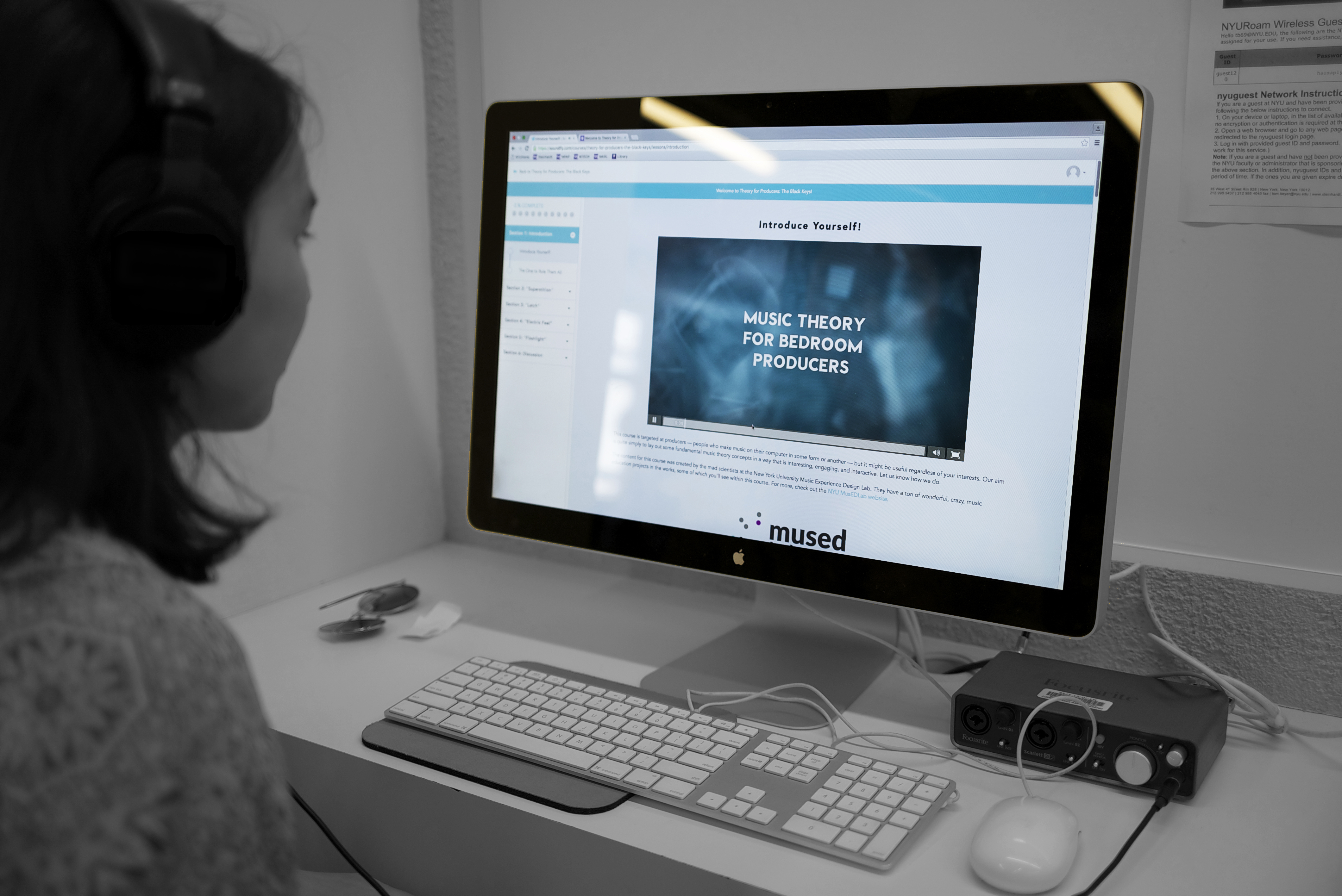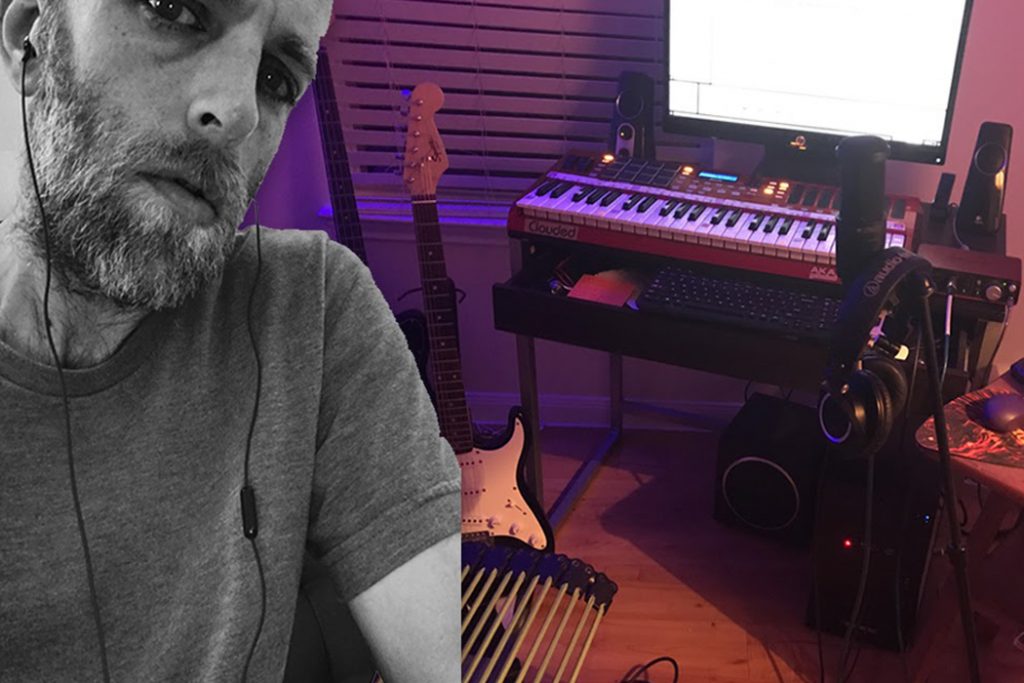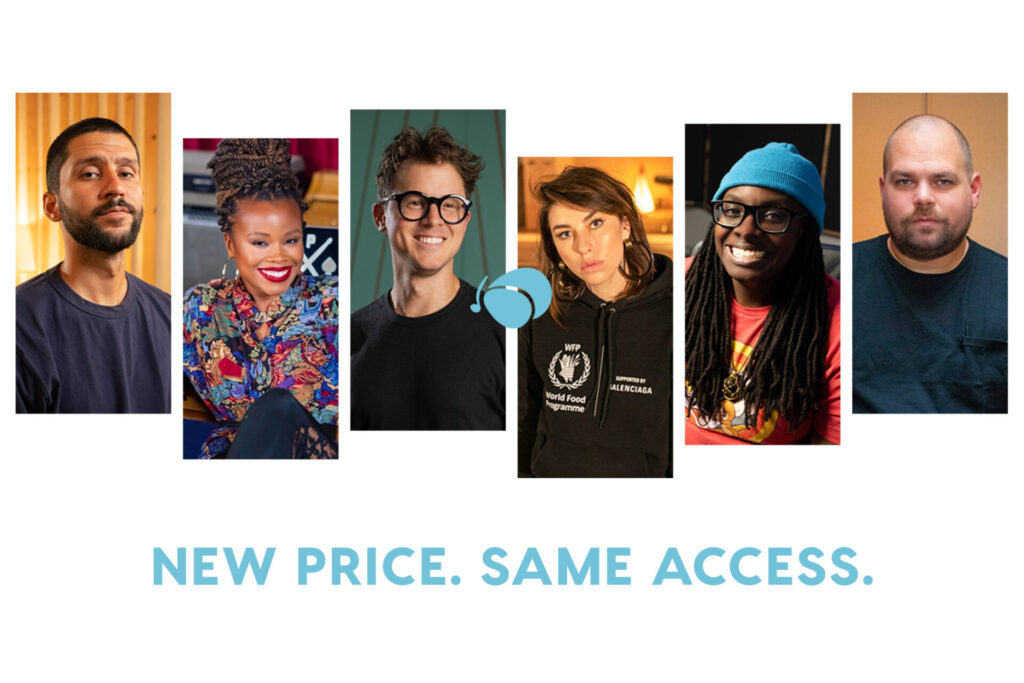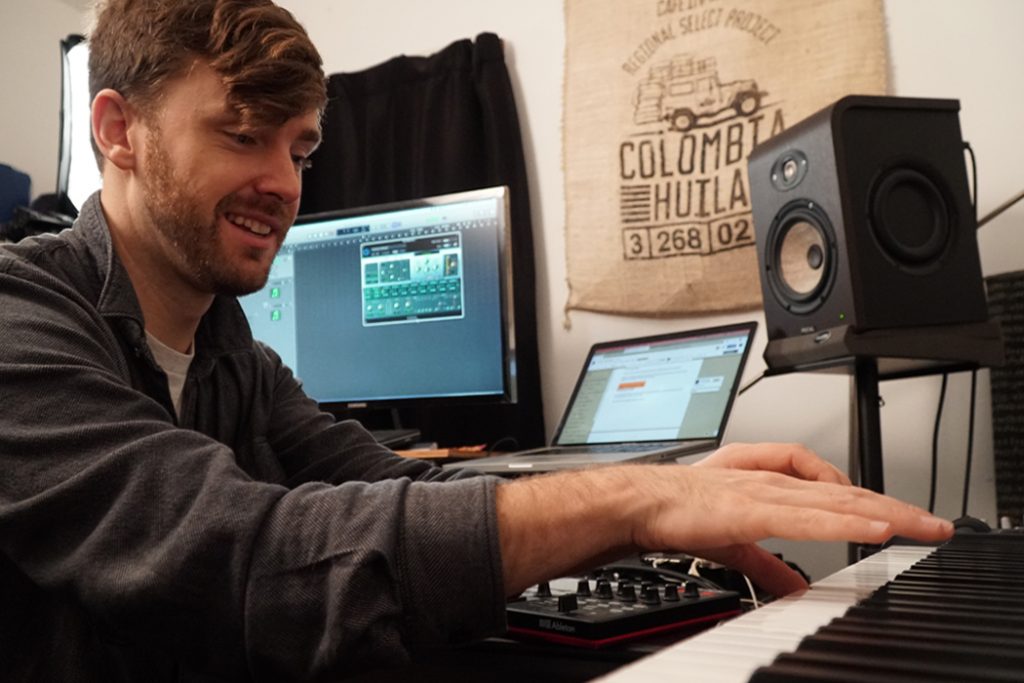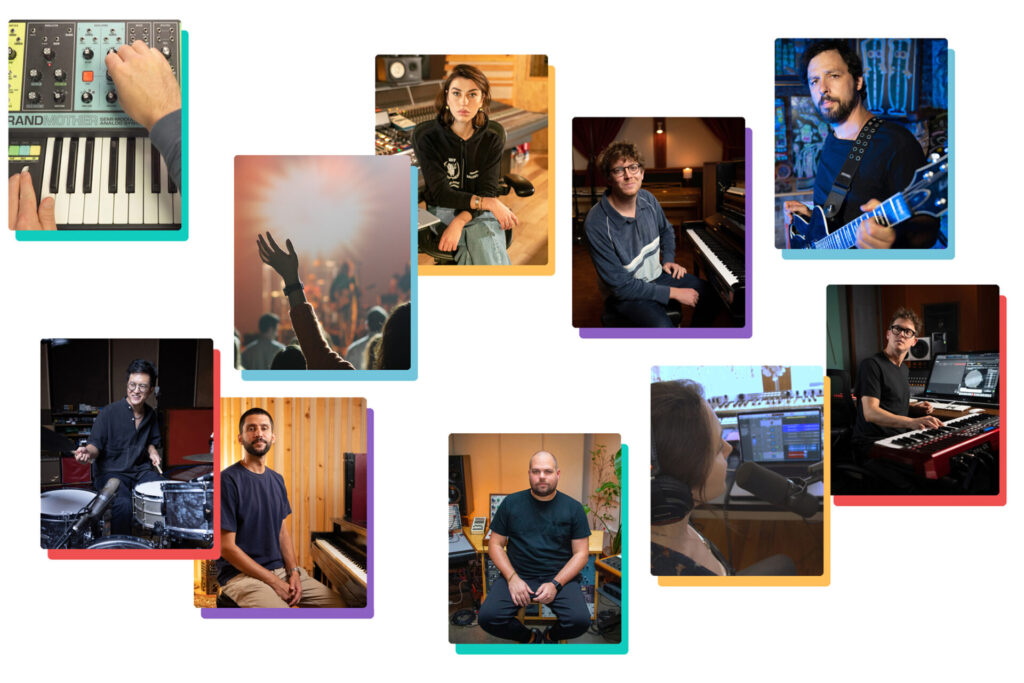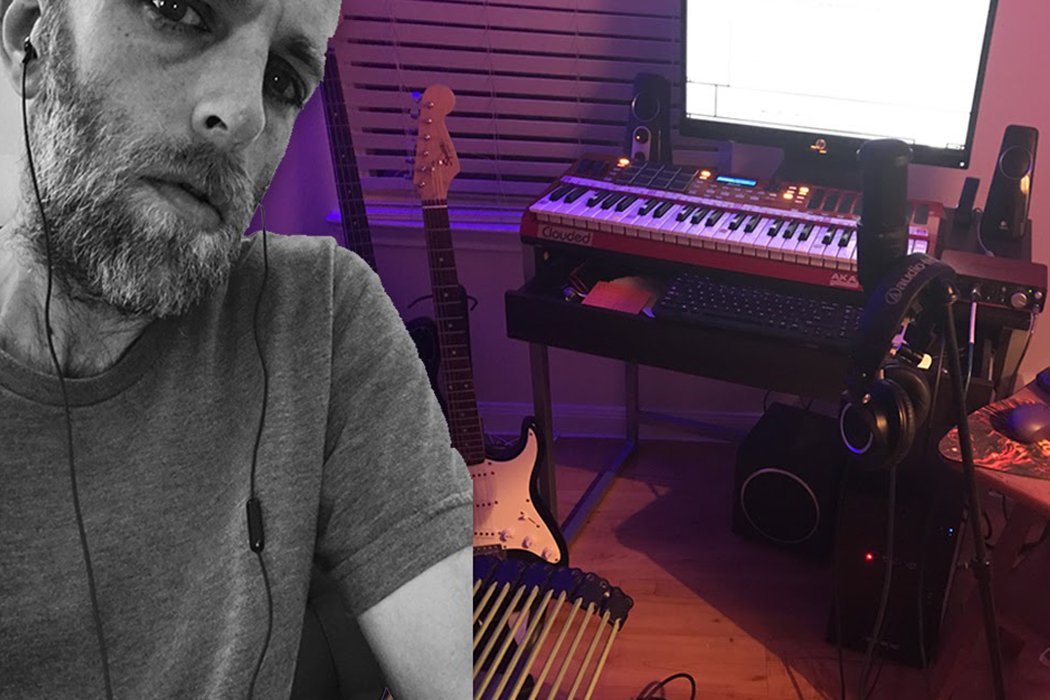
The staff here at Soundfly are relatively, no deeply, intertwined with our community of learners and mentors. And a lot of these communal interactions happen over on our Slack channel, where I, along with my teammates conduct weekly “Office Hours” to answer questions, promote discussion, demystify certain musical topics, or simply just be around to chat.
If you’d like to join our community of musicians, producers, composers, and educators, and gain unlimited access to all of Soundfly’s acclaimed online music courses, click here to become a Soundfly subscriber.
Last week, upon logging on for my Office Hours, I was planning to talk about something else entirely when I reflected on a brief prior interaction I had with Soundfly alumni Mark Richardson, that made me curious to learn more about his life. A Houston-based multi-instrumentalist who records solo as Sun Root, Mark has often made reference to a carousel ride of life stories in the last 20 years that include past bands, his working with the late Daniel Johnston, and his battle with drug and alcohol addiction.
I’m happy that Mark accepted my invitation to join me for a conversation — where we talk about those things and more — and I’m even happier that I get to share Mark’s story and music with you today. Enjoy!
Jeremy: Hey Mark, why don’t we start with a slow pitch right over the plate. How would you describe the music you make?
Mark: I would say D.I.Y. indie maybe, but more specifically post-rock with some lo-fi qualities mixed with modern production. I have a hard time figuring out what hashtags to use on my instagram page to be honest.
Ha, you and me both! But that’s a pretty solid description, since some of your songs have lyrics while others are instrumental. How does that reflect your songwriting process?
Lyrics are always the last thing I do, and basically every song I write I lay down vocals, but some don’t make the cut. I’m okay with songs having no vocals if they’re going to diminish the overall feel of the track. In some songs, I actually just sing gibberish if I feel vocals are needed but I have no words.
I think people connect to the voice like no other instrument, so if I come up with a good melody I will at least make vocal sounds. I first come up with a guitar riff while taking smoke breaks, and then a beat. But I don’t focus too much on the beat just yet. I’m more concerned about the harmony or the feeling I’m hearing in the guitar tones.
I never have ideas swirling around in my head. It’s more about a reaction to what I’m hearing in the guitar riff in the moment… and breathing. I love keeping “breaths” in songs. Most musicians cut those short inhalations out but I leave them in and sometimes don’t sing at all. Surprising the listener who’s expecting a vocal is fun. I love breaking down those expectations.

Definitely keep them in, for sure. It’s so much more human, and I think it plays into your statement about people connecting with vocals no matter the lyrics. There’s definitely a post-rock quality to the music for sure, it being instrumental and guitar driven, but it’s also kind of less angsty than a lot of full band post-rock. In fact I find your music really positive.
A track like “Noah Monday’s” sounds to me a lot like El Ten Eleven, it’s got a really beautiful sunny side to it even though it’s a bit dark and complex. What’s the story there?
Thank you, that’s a special song for sure. At the time, I was a brand new father, and split up with my son’s mother so I was depressed about not living with him anymore. That morphed into isolation and anxiety to the point that I couldn’t drive my car, literally I had to use Uber to get to work.
Mondays were my day with my Noah.
I’m sorry to hear that. But this is also fascinating and beautiful from an inspiration standpoint; instead of leaning into that depression and isolation and having music be “an excuse” to go further down into that spiral, it seems like the positivity and driving nature of these tracks were a ladder out of it. Does that ring true for you? And if yes, was this a conscious decision or something subconscious and haphazard?
Absolutely, there’s pain in that song, but I don’t want to send a message of just pain. Human emotion is more complex than that. I was trying to express the joys of being a father (the verse) and also the pain of not being there for him everyday (the chorus). I wanted the conflicting emotions I was feeling to come out in the song.
It’s not a decision per se but it works out that way, I like feeling hopeful so I want others to feel there’s a light at the end of the tunnel.
I also think that’s what makes “El Demon” so strong as a standalone track, the low end is sinister and complicated like it reveals something brooding and anxious, but over everything else the guitar creates an uplifting narrative. It rises above, and asks the listener to join the high road with it. Can you talk a bit about that track in particular?
“El Demon” was an idea that I found on my four-track from years ago when I was a courier. I had a CB radio that I used to record the instructions for my route, and so this four-track tune had those recordings and an acoustic guitar playing over them. But the riff was kind of lame. I thought: Man I have to use this somehow!
So I put it in Ableton Live, and everything after that first little intro part is all new. The talking you hear is my boss telling me where to pick up my next package. The B part was a separate song i did entirely, but it seemed to fit in an odd way. I didn’t want “El Demon” to be too tough sounding. I prefer evoking different emotions in the same song.
We talked briefly in private about some albums and bands that inspired both of us nearly 20 years ago — such as Slint, June of 44, Rachel’s, and so on — I was wondering what your early musical life was like while you were in bands…
Yes we definitely connected on those Quarterstick artists. I was in a band called Clouded in Houston from 1992 to 1997. We were heavily influenced by The Flaming Lips and early Built To Spill. At the time most bands were doing the heavy grunge thing, but we were doing more indie/emo stuff. We recorded our self-titled album with John Croslin who had worked with bands like Guided By Voices and Spoon, which was a great match for us. Soon after our album was released we were accepted to SXSW in 1997.
I co-wrote the songs with the singer/guitarist but the whole time I was making songs on my four-track at home, but they never made it in our sets.
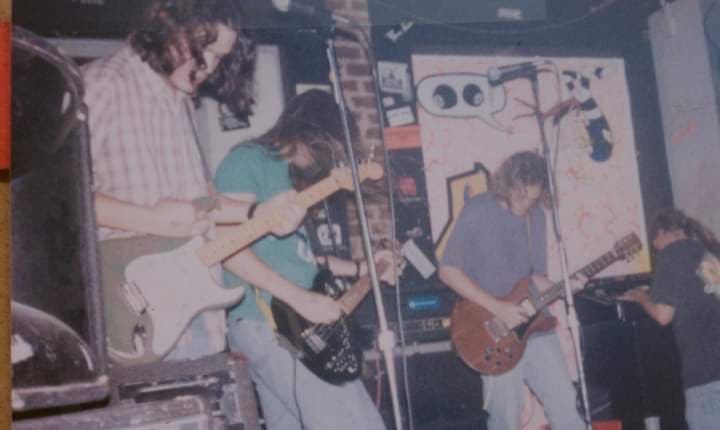
I also played with Daniel Johnston between 2001 and 2004. I was featured in his film The Devil and Daniel Johnston.
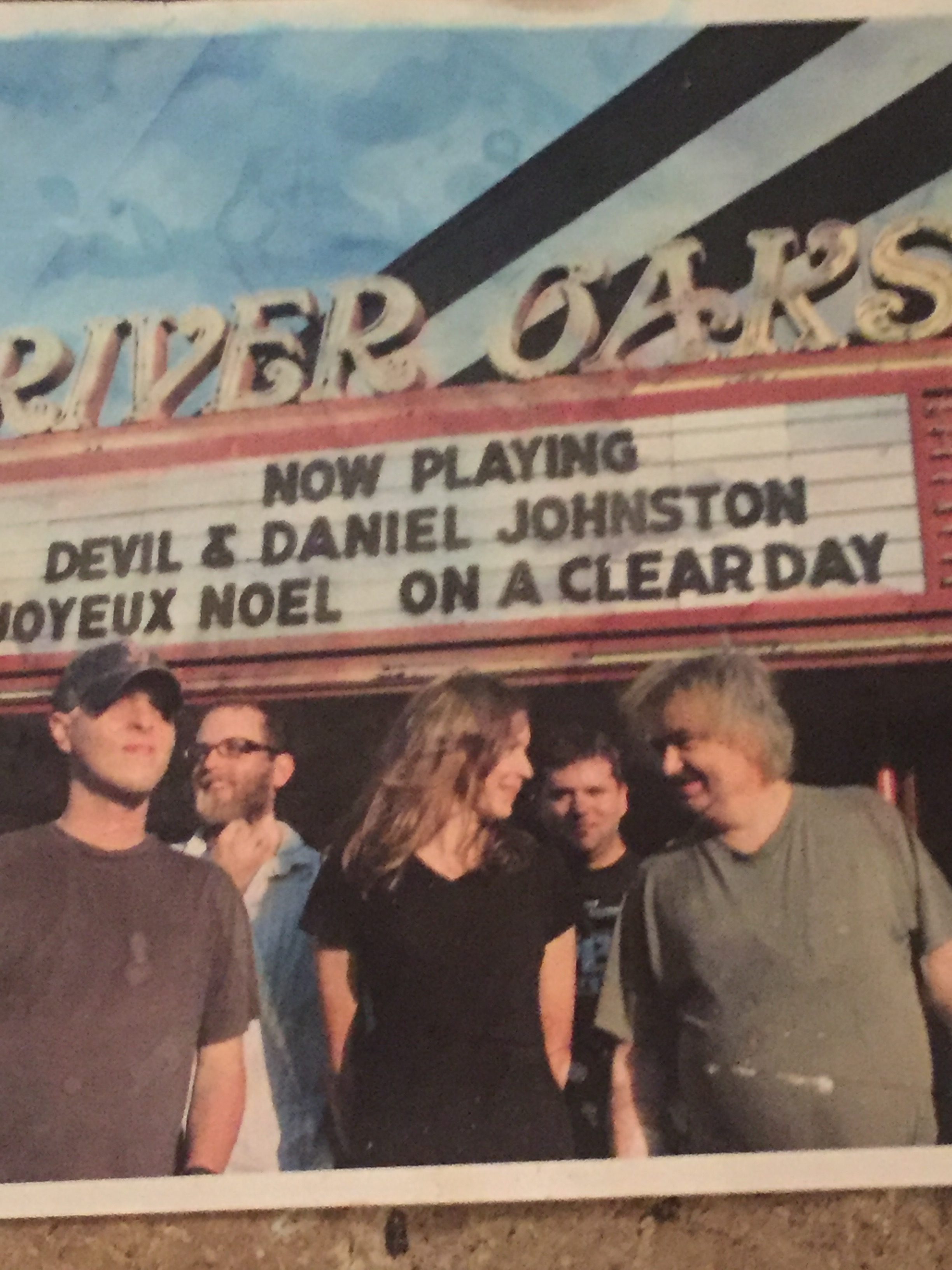
So between 1997 and…. what were your musical activities?
Drugs…
Let’s talk about that…
I didn’t make much music during those years, that’s when the drugs became a problem. In 1997, I quit Clouded right before we were to go on tour because I was drinking too much and couldn’t handle all the attention we were getting. I had timing problems on stage when performing. We had a lot of really quick loud/quiet parts that needed to be on point, so I drank to relax.
It helped at first, but then it quickly got out of control. Like every music scene in a big city, there was also a “drug scene.” I experimented with heroin and cocaine, but it was always alcohol that started the downward spiral for me. So I left Houston and moved to Dallas to my grandmother’s and just got worse; isolating and drinking.
During that time I managed to record some songs on the four-track but they were mostly angry drunk rants.
Then I moved back to Houston where I met Daniel in 2001 by way of a friend who was playing with his band Danny and the Nightmares. I went up and down with sobriety but I would binge drink and do stupid things like hang out with prostitutes and talk about our miserable lives while smoking crack all because I had a single drink the day before. I went to rehab several times but always went back to drink.
The last time I was in rehab I met a heroin addict who got released the same time as me. He shot me up and I quickly got re-addicted. I loved heroin because it killed the cravings for alcohol.
Wow, that’s super intense. So how did you finally shake it, and how long did it take for the musical roots to then start growing again?
I was addicted to heroin for six years and tried to quit about 20 times. The withdrawals were bad, like nothing I had ever felt before in my life. My mother, out of desperation, set me up with a doctor who prescribed Suboxone. I still relapsed several times but not on heroin, since this medication blocks the transmitters that heroin effects, I smoked crack. If only because I was still in the mindset of getting high and dropping out. It took several months of trial and error before my mind was in the right place to heal. I would be in prison, hospital, or dead if it weren’t for Suboxone, it saved my life.
And since I was on the road to recovery my mother let me move back home. Slowly I began to regain her trust, and life started to look a little brighter. I felt comfortable in my own skin again, and naturally I started playing music again. I started recording on Fruity Loops, then recently graduated to Ableton Live and have been spending a lot of this time learning how to record on a computer. I realized I needed to learn some music theory so that’s when I reached out to Soundfly.
Since music came back into my life in a healthy way I have not looked back.
Was the DAW at first just a way to sort of “digitize” and sort through old tapes, or did you see it even then as a new vessel for expression?
A new vessel for sure, because my four-track wasn’t working anymore, so I just made the quick jump to digital. I would like to use my old tapes I just don’t have a way to play them. It’s been a learning process for sure, being able to visually see your sounds in the DAW is really cool. I love to zoom in real far and chop up a vocal or guitar lick.
Alright so we’ve been chatting for nearly an hour, so we should probably wrap this up but first, what are you working on these days?
My good friend Lee Almaraz and I are working on a few songs together and I’m actually working on a song with fellow Soundly student Lisa Reshkus (aka Ella Miss). I’m learning so much from her. Also she’s teaching me how to use Instagram so I can share my stuff with the public. There’s a lot for me to learn in that department. Ha ha!
What a story! Thanks for sharing Mark! I’m impressed at the journey you’ve taken.
Thank you!
I hope this helps other musicians that are struggling with addiction.
Soundfly is about so much more than online music courses…
Subscribe here to get unlimited access to all of our course content, an invitation to join our members-only Slack community forum, exclusive perks from partner brands, and massive discounts on personalized mentor sessions for guided learning. Learn what you want, whenever you want, with total freedom.
